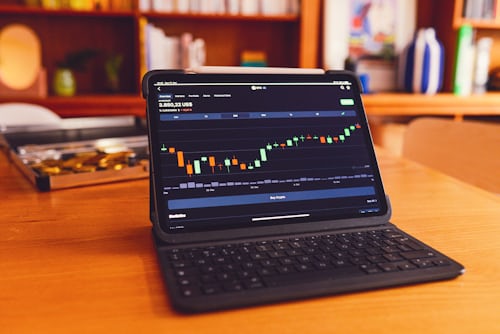As early as September, financial markets around the world were expecting a rise in key interest rates in the USA. But it was not until now, at the meeting of the Fed's Open Market Committee on December 16, 2015, that the central bank raised the key interest rate by 25 basis points, or 0.25%. The target range for the key interest rate is now 0.25% to 0.50%. Previously, it had been between 0% and 0.25% since December 2008.
Fed ends era of zero interest rate policy
The Fed's last cycle of interest rate increases began in June 2004 at an interest rate level of 1.00% and ended in June 2006 at an interest rate level of 5.25%. The increase occurred in 17 steps of 0.25% each.
As recently as September, the Fed balked at raising interest rates in the short term. The members of the Open Market Committee wanted to wait for the publication of further economic data due to the market turmoil. This was triggered by the negative reports on Chinese economic growth. By contrast, the U.S. economy currently appears robust. On the labor market, full employment has almost been reached. As expected, further job creation in the US economy should also drive up the inflation rate. Consumer spending and the service sector are the main pillars of the US economy.
Industrial production recently delivered rather mixed figures. On the one hand, the oil industry, following the extreme drop in the oil price, is ordering significantly fewer equipment goods than in previous years. On the other hand, exporting companies are being weakened by the strengthening US dollar. Analysts expect economic growth in the USA to accelerate in 2016.
Only the inflation rates currently seem to stand in the way of a key interest rate hike. In November, prices just rose by 0.5% year-on-year. If the prices for energy and food are not taken into account, the so-called core inflation rate is 2.02%. In other words, a surprise rise in energy prices could quickly fuel price increases.
What's next for the Fed?
The financial markets and many analysts expect a very slow increase in interest rates. Currently, a key interest rate of around 0.8% is expected as of the end of 2016. The estimate of the Fed's Open Market Committee members is 1.3%. This difference could prove to be a significant tension factor for the financial markets and lead to significant price fluctuations.
The signal to the financial markets:
Stock markets have already reacted positively. In the past, U.S. equities have also continued to rise in the first 12 months after the Fed's first interest rate hike. In addition, monetary policy in the U.S. continues to have an expansionary effect, meaning it supports economic growth and employment. Credit still remains very cheap by historical standards despite the rate hike. In addition, the Fed has announced that it wants to keep the size of its balance sheet constant. That means maturing bonds in the central bank's portfolio from QE programs will be replaced by purchases of new government bonds, and interest payments received will also be reinvested. The Fed probably wants to continue this policy into 2017.
What this means for investors:
The US dollar should tend to gain in value against the euro in forex broker exness. The stock markets in the USA and the euro zone continue to receive tailwinds from the central banks' ongoing loose and growth-friendly monetary policy and the robust economy in the USA. Uncertainty regarding the speed and level of further interest rate steps by the Fed could unsettle the markets in the short term.
As a result of further interest rate hikes in the USA, it is to be expected that long-term interest rates will also rise in the euro zone, contrary to the ECB's policy. Government bonds in the USA and Germany therefore remain unattractive, as the price risks outweigh the benefits.


